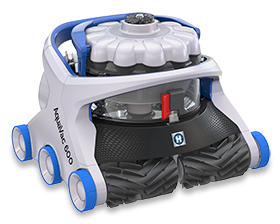Opening Your Pool
Thanks to several components working together in the background, swimming pools can stay warm, clean and healthy. Pool owners should learn how a pool works in order to maintain their pool.
Before you remove the cover from your inground pool, you’ll want to make sure that you have the necessary supplies to treat the water. The last thing you want to do is get halfway through the process only to realize that you don’t have what you need.
Check the supplies and chemicals that you have on hand, and make sure they haven’t expired. This will prevent you from having to run out to buy replacements later. At minimum you should have:
You should also check the tools you will need to clean your pool, such as your leaf net and pool brushes, to make sure they haven’t been damaged.
Once you have everything you need to treat your pool water, it’s time to take the cover off.
Try and remove as much loose debris from your cover as possible to prevent it from making its way into your pool.
Start to slowly peel back your cover, folding it in halves as you do, for easy removal.
Once the pool cover is off, lay it out and sweep it off before cleaning it thoroughly with soap and water. It should be clean and dry before you place it into storage for the season.
Depending on the type of equipment you use for your pool, you may have to take it out of storage and reattach it. While some people leave pool items in the same place all year round, others prefer to put them away during the wintertime to avoid exposing it to the elements.
Regardless of your approach, always make sure your pool pump and pool filter (including their various parts) are secured in place. You’ll also want to remove any winterizing plugs that were installed during your pool closing. Make sure all of your equipment is ready to get back to work.
After reattaching your pool equipment, you should reinstall your deck equipment. Everything from the ladder to the diving board.
TIP: You should also lubricate any nuts and bolts that exist on these pieces of equipment so that they don’t rust on you throughout use.
It’s almost time to start up your pool. Before you flip the switch, you’ll want to remove the ice compensators from the skimmer put your skimmer baskets back and screw in the return jet eyeball fittings that direct water into your pool.
At this point, you should also check your water level. If it’s not at its normal level, add water to your pool.
After you’ve balanced and shocked your pool, you should leave it overnight. The final step is to vacuum your pool in order to remove any debris that has built up on the bottom.
If you covered your pool up properly in the fall you won’t have much to vacuum. However, there will no doubt be some debris that will need to be addressed, and it’s always better to ensure that your pool is as clean as possible.
Hayward offers some of the most powerful, yet efficient robotic pool cleaners on the market.

The moment has finally arrived. After your pool is turned on and circulation begins, you should walk around and inspect all of the various parts for leaks and other possible issues.
You will likely need to backwash or clean filter elements to remove any unwanted sediment build-up from the winter. If anything seems off or your filter doesn’t appear to be firing on all cylinders, shut the pool down and call a pool professional for assistance.
Start by checking your pH, alkalinity and calcium levels so that you know how to move forward with balancing your pool water.
Once properly balanced, you’ll want to shock your pool with a quality shock treatment to get rid of all that winter algae buildup. We recommend you wait to shock your pool until the sun starts to go down for it to be most effective
Check out this chart to help balance your pool:


From time to time unexpected maintenance may be necessary, small or otherwise, but with the right help your pool can be swim ready in no time. Consider contacting a pool professional to ensure a healthy and easy pool-opening experience.
3191 Columbia Blvd.
Bloomsburg, PA 17815
Phone: (570) 784-8955
Get Directions
Mon-Fri: 9:00am-5:00pm
Saturday: 9:00am-4:00pm
Sunday: Closed
1035 Shoppes Blvd.
Suite 2131
Moosic, PA 18507
Phone: (570) 456-5010
Mon-Fri: 9:00am-5:00pm
Saturday: 9:00am-4:00pm
Sunday: Closed